Last updated: September 14, 2023
Article
Crystal Lake Cleanup at Mammoth Cave
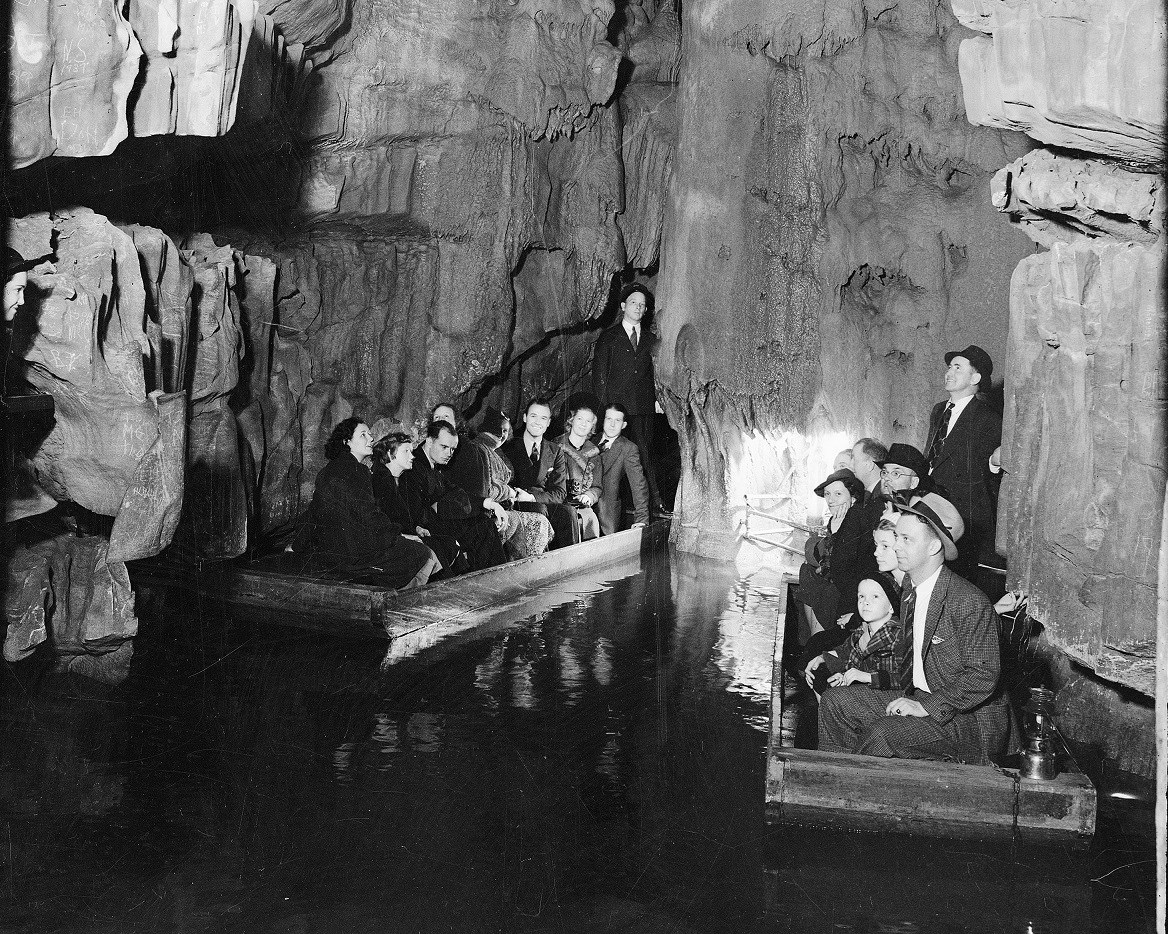
Photo from Mammoth Cave Collection
Countless visitors have ridden a boat on or walked by Crystal Lake in the Frozen Niagara section of Mammoth Cave over the last 100 years. Most leave only footprints and take only pictures, but occasionally trash, litter, or even a ninja turtle is left behind. Park resource managers worked on a special project to clean up this area of the cave and restore the waterway to a more natural state.
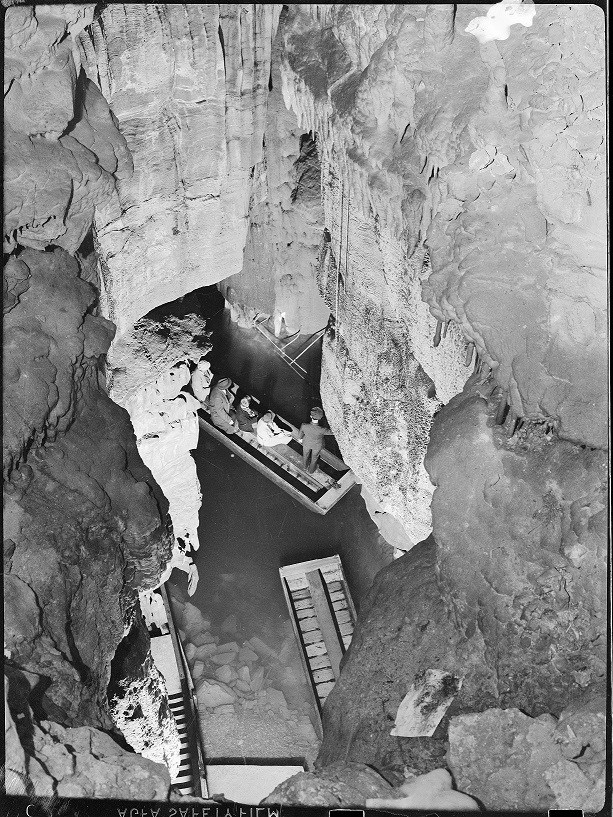
Photo Mammoth Cave Collection
History of Crystal Lake
Crystal Lake is a small natural pond formed by a floatstone embankment in the Frozen Niagara section of Mammoth Cave. The lake sits under Moonlight Dome, a 35-foot-high dome feature that is somewhat active in wet weather, and features cascades of flowstone and draperies.
The “lake” portion of Crystal Lake was expanded by the installation of a concrete dam by cave operator George Morrison in 1923. He wanted to have a larger body of water in the cave so he could offer boat tours in his section of cave. He was in direct competition with the Mammoth Cave Estate’s Echo River boat tours that took place in the lower Historic section of Mammoth Cave.
Individuals accessed the lake by climbing down wooden stairs that led to a small 3- foot by 11-foot concrete slab. Morrison’s boat tour was very short. It is said that you could push off from one side and quickly hit the other. Visitors may have been on the water for only a few minutes, but having the lake gave Morrison the ability to advertise a “boat tour” which would draw visitors to his cave instead of his competitor’s tour operation.
The lake was used by Morrison throughout his ownership and operation continued by the National Park Service after the land was transferred to the federal government in 1941.
Cave Trail Improvements
In November 2022 the park began a yearlong project to rehabilitate and reconstruct approximately one mile of cave trail that runs from the New Entrance to the Frozen Niagara section of Mammoth Cave. The project hardened trail surfaces, installed curbing, replaced handrails with stainless steel handrails, reconstructed and upgraded several sets of stairs, and constructed new overlooks and seating areas.
One of the areas that saw improvements was the Crystal Lake overlook. This section of trail traveled over Crystal Lake but did not allow visitors to have a clear view into the lake area. The trail improvement project replaced the walkway with a see through metal grate and extended the viewpoint further over the lake so visitors could look down on the natural resource and piece of cave history.
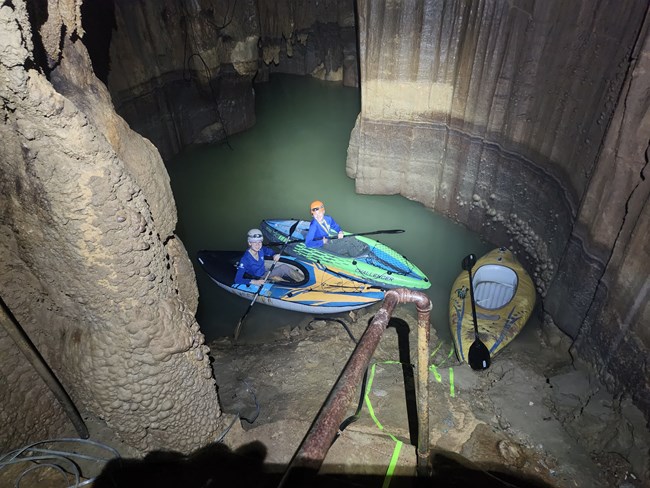
NPS Photo
Improving Cave Habitat
The Cave Trail Rehabilitation Project closed the Frozen Niagara area to visitors for almost 12 months. Park Resource Managers saw the closure as an opportunity to thoroughly clean out Crystal Lake of a hundred years of trash, coins, and other items that had been dropped or thrown to the water. Removing items like copper pennies and other metals could make the lake more habitable for cave aquatic species such as cave crayfish or cave shrimp. The lake has been void of these creatures for many years. Heavy metals, like the lights installed under the water for tours or those from coins, can be damaging to sensitive cave aquatic life.
How to Clean a Lake in a Cave
To get to the bottom of the lake, park scientists had to drain water away. They installed a syphoning system and electric pump that would move the water from one side of the Morrison era dam to the other. This process took several weeks because the water level would fluctuate as rain fall would drain from the surface into the Mammoth Cave system.
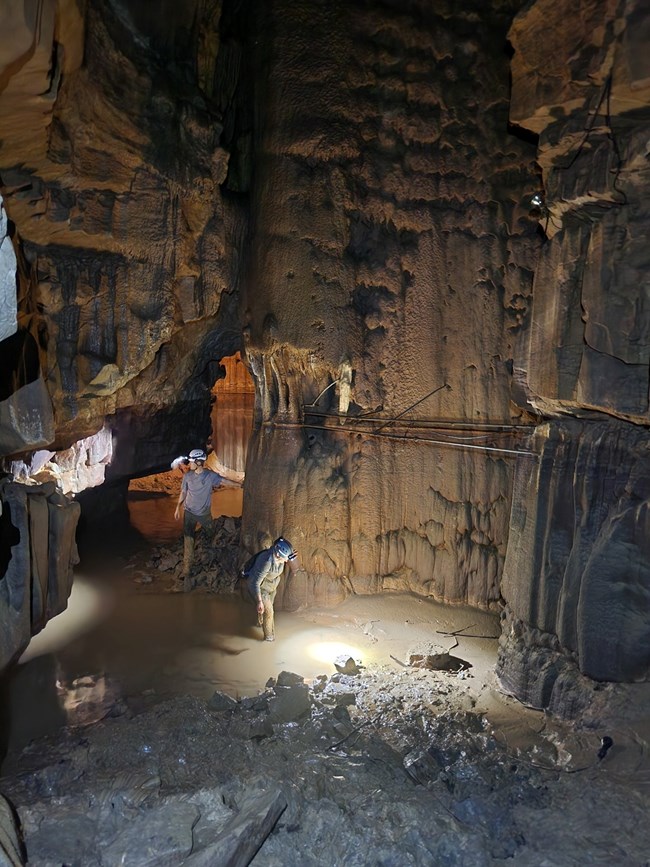
NPS Photos
Scientists discovered that Crystal Lake uses approximately 5,000 sq feet or about 0.1 acre of surface land to collect water. That means there is only about 0.1 acres land outside the cave that funnels water underground to fill Crystal Lake.
In the end, the lake was lowered by about 9 feet to reach a point where volunteers could reach the bottom and collect the unnatural material. The cleanup effort was completed by 18 members of the National Speleological Society (NSS) who volunteered 108 hours of their time to haul out mud from Crystal Lake in 120 bucket loads to the surface.The team brought roughly two tons of mud to the surface! Once the mud was out of the cave, the volunteers processed it through screens to separate out the trash and foreign materials.
One Man’s Trash is a Mammoth Cave Treasure
What was found in Crystal Lake was a lot of items you would expect a visitor to drop while on a cave tour. Small coins and chewed bubble gum took the prize for most items collected. Larger items like cameras, flashbulbs, flashlights, and hats were found and could have easily be dropped while peering over the handrail or trying to get the perfect photo of the cave.
Other items, like the golf ball and plastic spoon give us a little pause as to what was happening in the cave when those items went into the water. We are sure there was some major frustration from the visitors who lost their reading or sunglasses and would expect some tears were shed over a Teenage Mutant Ninja Turtle toy who “cowabunga-ed” over the edge.
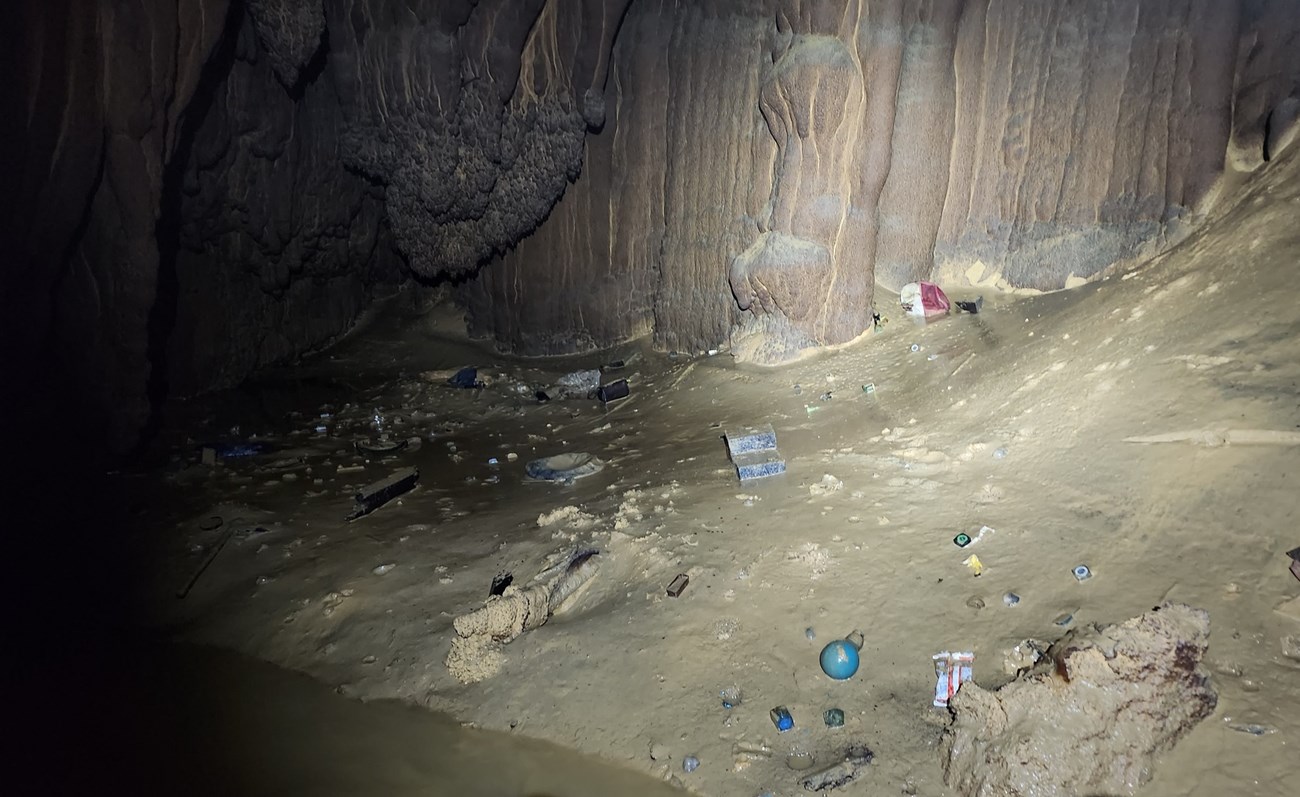
NPS Photo
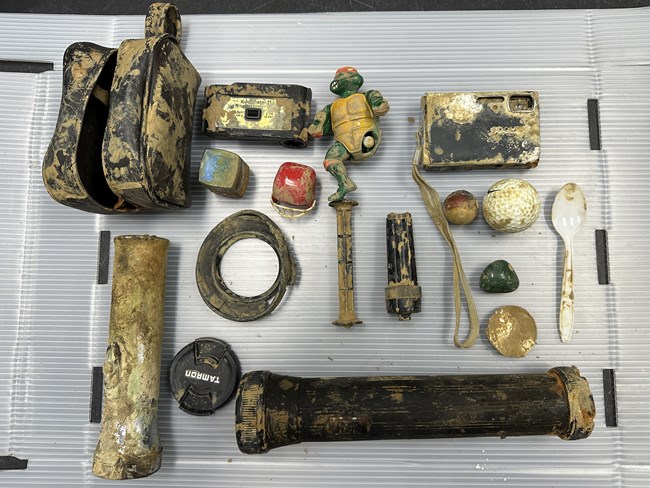
NPS Photo
Items collected and cataloged from Crystal Lake:
Coins
- 1 cent to 50 cents coins.
- The oldest was a 1934 quarter, containing 90% pure silver at the time.
Camera Items
- Flash Cubes of various styles
- Digital camera
- Roll of Kodacolor II Film
Apparel
- Hats
- Pair of Reading Glasses
- Pair of Oakley Sunglasses
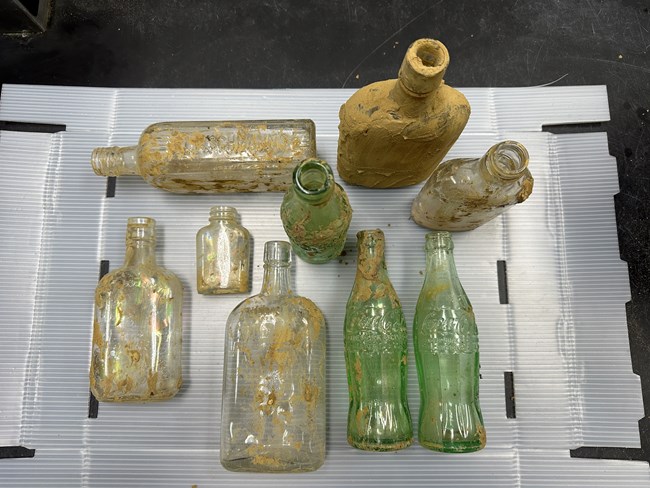
NPS Photo
Bottles:
- Class Coke bottles
- Misc glass bottles
Random Items
- Flashlights
- Edgeworth Extra High Grade Ready-Rubbed Tobacco Tin
- Chewed bubble gum (about 200 grams worth)
- Golf ball
- Bouncy ball
- Plastic spoon
- Raphael (Teenage Mutant Ninja Turtle) missing a leg and both forearms
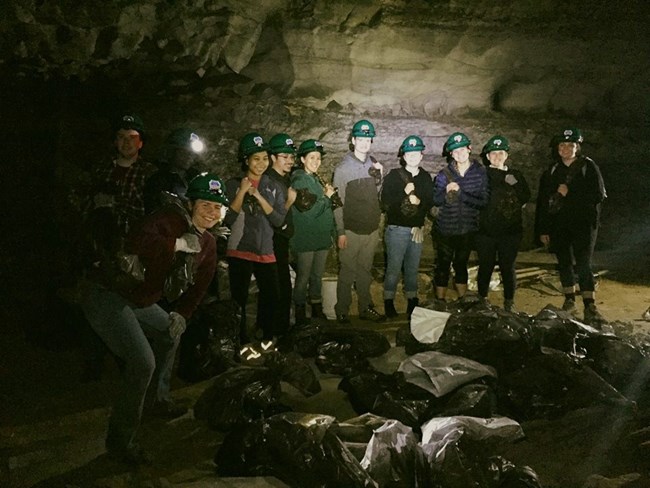
NPS Photo
Health of an Ecosystem
Clean up efforts like at Crystal Lake are an important aspect of preserving the health of the Mammoth Cave ecosystems. Old trail infrastructure such as broken concrete, unused lighting cables, or treated wood is often removed by volunteer groups who hall hundreds of pounds of materials by hand from many areas of Mammoth Cave. Other areas are similar to Crystal Cave because they require specially trained staff to rappel into deep pits to retrieve trash and items that have dropped from visitors as they travel through the cave.
All cave cleanup activity is essential to restore the cave system to a more natural habitat for the many creatures that depend on the cave environment for their survival.
